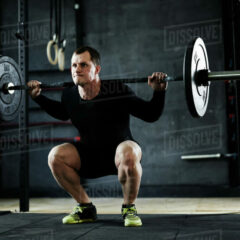When people think about core muscles, they often picture a set of toned abs. However, the core is more than just that six-pack in fitness magazines. It includes the muscles in your trunk, from the front of the body to the back, connecting your lower body to your upper body.
Core muscles are crucial in our daily lives, even if we don’t always notice them. They play a big part in stabilizing the body, helping you stand upright, sit properly, or even bring the groceries inside. They simplify simple tasks and reduce the risk of falling or getting hurt.
Having a solid core boosts performance in sports and physical activities. Whether you’re a casual jogger, enjoy yoga, or like to hit the weights, a strong core helps improve your movement efficiency and power.
Think of the core as your body’s central support system. It keeps the framework tight so that all other parts can function smoothly. It’s the difference between balancing on one foot with ease versus wobbling and struggling. It understates the core’s critical role in protecting the spine and reducing stress on other ligaments and joints.
Unveiling the Anatomy: Key Muscles That Make Up the Core
Getting a grip on the specifics of core anatomy can unlock your workout’s true potential. The core isn’t just about the muscle group at your midsection. It’s a complex network that includes muscles like the rectus abdominis, often known as the ‘six-pack,’ but also layers of others that don’t always get the spotlight.
The obliques are your side muscles. They’re like the body’s natural corset. Engaging these muscles helps with bending and twisting, key to many daily movements and exercises.
Then, there’s the transverse abdominis, a deeper layer of muscle that acts like a girdle. It plays a crucial role in tightening your waist and stabilizing your back. Think of it as the foundation for your core strength.
Don’tRemember the back muscles, such as the multifidus and erector spinae. They are vital for posture and keeping the spine aligned, as essential stabilizers when lifting or even just sitting for long periods. The pelvic floor muscles and diaphragm, often overlooked, support these muscles and create intra-abdominal pressure, crucial when lifting or exerting effort. The diaphragm, in particular, is indispensable for breathing, frequently underestimated but essential.
All these muscles connect and work together to create a stable, strong core. Understanding this interaction helps you train smarter, focusing not just on the front muscles but on a rounded, balanced workout regimen.
Effective Core Workouts: Exercises That Engage and Strengthen
Finding the right core exercises isn’t just about doing crunches on repeat. The goal is to engage a range of muscles for strength and stability.
Planks are a game-changer. They demand engagement from multiple areas across the core spectrum—shoulders to glutes, and hold steady tones your whole midsection without a single crunch.
Russian twists target the often-neglected obliques, making them a dynamic choice. To add resistance and boost effectiveness, grab a weight or even a household item like a small book.
If you’re ready to upgrade your core game, hanging leg raises offer a potent challenge. This exercise effectively targets your upper and lower abdominal muscles while also measuring your grip strength, making it a comprehensive way to enhance your fitness.
Consider the power of compound exercises. Moves like deadlifts or squats indirectly engage core muscles while benefiting other areas like the legs and back. They build functional strength, linking multiple muscle groups like in real-life movements.
For beginners, starting with basic exercises is perfectly fine. Modified planks or gentle twists can lay down a solid foundation. It’s less about how hard you go and more about doing the moves accurately.
Consistency matters most. Cultivating a powerful core takes time and dedication; it’s a marathon journey, not a quick sprint to the finish. Mixing different exercises prevents monotony and targets different muscle groups, which keeps your workouts fresh and your body guessing.
Incorporating Core Workouts into a Balanced Fitness Routine
Making core exercises part of your routine is a smart move for long-term benefits. The key is weaving them seamlessly into your schedule without making them a chore.
Aim to include core workouts two to three times a week. They can be standalone sessions or added to your regular workout. On days you’re focusing on lifting weights or cardio, throwing in a few core exercises while warming up or cooling down works wonders.
Listen to your body. If your core feels sore from a workout, it’s okay to focus on other areas for a day or two. Recovery is as important as exercise, as it helps your muscles repair and strengthen.
Keep tabs on your form, especially with core exercises. Proper form prevents unnecessary strain and maximizes effectiveness. If you ever experience sharp pains or discomfort, it’s wise to check with a fitness expert or medical professional. Getting the form right can make a world of difference.
Variety keeps things interesting. Switching up exercises helps prevent plateauing. For example, you might swap planks for side planks or integrate new moves like bicycle crunches to keep your body adapting.
Consistency beats intensity any day. Small, regular efforts build a robust core over time. Remember, core workouts are more about endurance and stability than brute strength. Make slow, steady progress, and the results will follow.
